by Brian Hioe
語言:
English
Photo Credit: Social Media
THE CONTROVERSY caused by a Nazi-themed cosplay skit performed by students at Hsinchu Kuang-Fu High School has provoked international outrage as well large domestic responses. These responses have included high school principal Cheng Hsiao-ming resigning in apology, condemnations by the German Institute Taipei and Israel Economic and Cultural Office in Taipei, the Ministry of Education intervening, forcing the school to apologize, and threatening to cut subsidies to it, as well as much media coverage and social commentary on the matter.
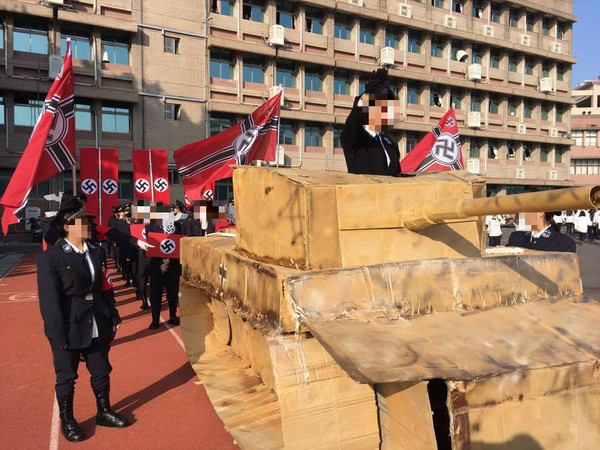 The history teacher standing in a cardboard tank while performing the Hitler salute. Photo credit: Social Media
The history teacher standing in a cardboard tank while performing the Hitler salute. Photo credit: Social Media
The Nazi cosplay skit, which was highly elaborate, was performed as part of an activity in which students were to dress up as historical figures. The class which performed the Nazi skit chose Adolf Hitler as the historical figure that they would dress up as. This was a decision which was not vetoed by their history teacher, something he later stated that he did in the interest of classroom democracy, because the students voted on it, although he said that he now regrets not halting the activity. The teacher also participated in the skit, standing in a cardboard tank as he performed the Hitler salute.
Much of commentary to date has focused on questions about limits on the freedom of expression, that Taiwan is itself like Germany a post-authoritarian country with a history of mass murder, and questions about what exactly Taiwan’s children are learning in its education system. We might take a closer look.
Not A Phenomenon Unique To Taiwan, But A Broader Asian One
FIRST WE DO well to situate the incident in the broader context of incidents in Asia in which Nazi imagery is appropriated devoid of any context of authoritarianism or ethnic cleansing. Public incidents involving individuals dressed up as Nazis in Asia are not unique to Taiwan. Separate incidents in which Japanese and Korean pop idols dressed up in Nazi costumes occurred in 2014 and 2016. More broadly, phenomenon of Asian “Nazi kitsch” is well-documented one, as can be observed in places as wide ranging as Thailand, Mongolia, Taiwan, Japan, Hong Kong, China, and India.
As with elsewhere in Asia, Nazi imagery appears quite often on fashion in Taiwan a la this broader phenomenon of “Nazi kitsch”. But Nazi-themed restaurants are also to be found. These range from night market booths to restaurants and drink stalls or the name of food items at such restaurants, as observed in the Italian restaurant that named a dish with German sausage in it, “Long live the Nazis”.
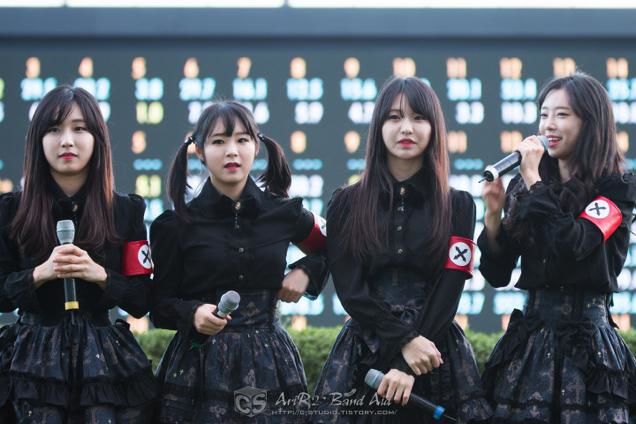 K-pop group Pritz. Photo credit: C-Studio
K-pop group Pritz. Photo credit: C-Studio
There have even been no less than at least two political parties which have named themselves the “National Socialist Party,” the first of which was composed of young people who professed a commitment to Nazism out of a frustration with political infighting between the pan-blue and pan-green camps in Taiwanese society. The second of these was a tiny, self-professed “Left Independence” political party that arose after the Sunflower Movement, which later renamed itself the “Socialist Revolutionary Party” after it was pointed out to it that “National Socialist Party” referred to the German Nazi Party (Although we might point out for self-professed Soviet-style communists that “Socialist Revolutionary Party” also has a specific meaning in the history of Soviet communism).
Nazi Imagery Divorced From Its Context In Asia?
BUT VERY RARELY in Taiwan or elsewhere in Asia does this use of Nazi imagery for fashion or entertainment come with a commitment to Nazi or fascist politics, anti-Semitism, or as an endorsement of ethnic cleansing. Obviously, there is no excuse for neo-Nazis who take on Nazi imagery as a vehicle for contemporary racism, whether in Taiwan or elsewhere. However, oftentimes, Nazi imagery is appropriated by Taiwanese or other Asians wholly divorced from its historical context, mostly seeing Nazi iconography as a culturally representative iconography of German culture. This even comes with the view of Hitler simply as a charismatic leader of German civilization, without any concrete sense that Hitler was a mass murderer.
It is a more general issue that Taiwanese society does not understand the full valences of Nazi imagery. This is not simply an issue of contemporary Taiwanese youth and the education that they are receiving, but has deeper roots. This is quite evident seeing as in the case of Hsinchu Kuang-Fu High School, even an adult high school history teacher did not initially see the problem with his class performing a Nazi-themed skit and even participated in it himself.
So what is the issue here, then? Is Taiwanese society simply too lacking in an understanding of international norms to understand the sensitivity of Nazism, as some have claimed? This is hardly so.
 “Long live the Nazis” spaghetti served at a restaurant in New Taipei City in 2014. Photo credit: TVBS
“Long live the Nazis” spaghetti served at a restaurant in New Taipei City in 2014. Photo credit: TVBS
Taiwanese students are taught about Nazi Germany as part of their high school education, although it is also true that the Taiwanese education system generally does not teach much of world history and places more weight on the history of the Republic of China. This also true in other Asian countries, which primarily teach their own countries’ history with a lack of emphasis on world history. Again, the phenomenon of “Nazi kitsch” is not unique to Taiwan.
And we do well to remember that it is wholly possible for a similar situation to take place in a western country where high school students dress up as Nazis in the belief that this is merely a joke, and that nobody will take offense. Certainly, a similar incident took place in California in 2016, although this did not provoke such international outcry. Along similar lines, perhaps the high school students did understand the seriousness of Nazism, but simply thought it would be funny to perform such a skit. The skit was set to the “Imperial March” from Star Wars, after all. High school students being juvenile is nothing new to the world.
Seeing as there is some exoticism in news coverage to the fact that this took place in Taiwan, one vaguely suspects the incident would have passed without much commentary had it occurred in a western country. But, either way, with regard to the phenomenon of “Nazi kitsch” seeing as Taiwan is not a country which was directly a victim of ethnic cleansing by Nazi Germany, and the Holocaust occurred over 70 years ago in faraway, distant Europe, the history of Nazi Germany is merely one of many historical facts that students are forced to absorb and then regurgitate for standardized testing, it should not be surprising that the reality of Nazi Germany seems rather remote and abstract, and the historical crimes of Nazism seem wholly divorced from the use of Nazi iconography for many—including adult members of society, such as the high teacher that approved the skit despite being a history teacher.
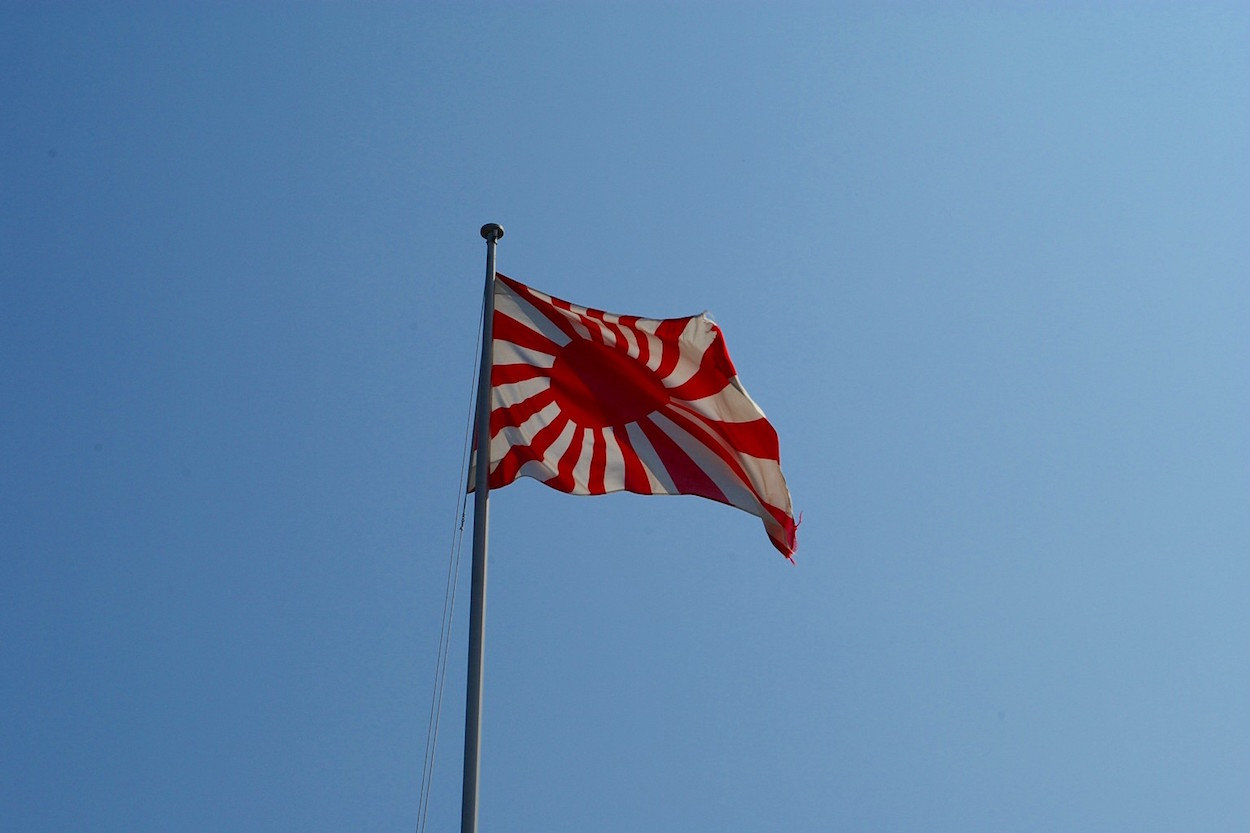 The Rising Sun flag, though sometimes seen used by the Japanese Self-Defense Force or seen at sporting events, is controversial both within and outside Japan because of its connotations of Japanese militarism. However, it is often seen as a value-free symbol of Japan in the western world. Photo credit: Tokyo Watcher/CC
The Rising Sun flag, though sometimes seen used by the Japanese Self-Defense Force or seen at sporting events, is controversial both within and outside Japan because of its connotations of Japanese militarism. However, it is often seen as a value-free symbol of Japan in the western world. Photo credit: Tokyo Watcher/CC
We do well to remember that Japanese war crimes during World War II, which occurred at the same time as Nazi ethnic cleansing of Jews but took place closer to home, remain a sensitive matter in Taiwan. A high school class performing a skit dressed as imperial Japanese soldiers in Taiwan, with the view that imperial Japanese imagery is simply representative imagery of Japanese culture, is unthinkable.
On the other hand, this same phenomenon of cultural appropriation without any understanding of context also occurs in the western world, regarding Asian history. We actually quite often find use of WWII imperial Japanese imagery in a way that would be unthinkable in Japan itself, given the sensitivity of the past history of Japanese empire. This occurs quite frequently with the view that such imagery is simply value-free representative imagery of Japanese culture and nothing else, without a sense of the connotations of such imagery within the Japan as harkening back to or glorifying Japanese war crimes.
In the same vein, one occasionally sees KMT iconography harkening back to the White Terror appropriated by foreigners in Taiwan as fashion—or, in fact, as a representation of their sincere, heartfelt affection for Taiwan, given that KMT iconography blurs with Republic of China iconography as a product of the former party-state, and the Republic of China is what Taiwan currently known by as its official name. This occurs with a lacking sense of the cultural valences for a country whose martial law period at the hands of KMT one party rule only ended just over 25 years ago.
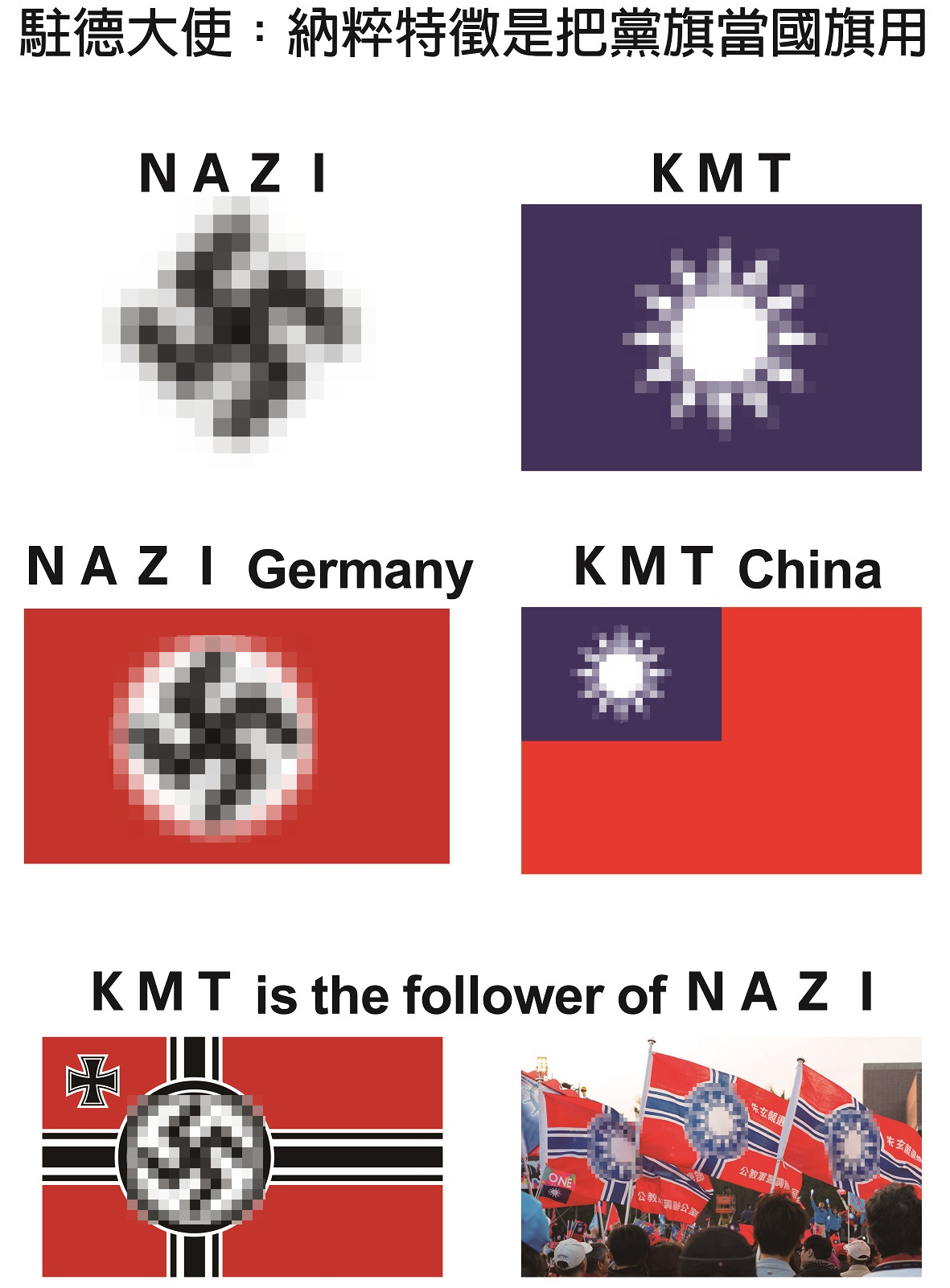 Internet meme which appeared after the Nazi skit incident, comparing KMT iconography to Nazi iconography. The Republic of China flag is still sensitive to some victims of the White Terror, because it contains KMT party iconography as a legacy of the former party-state during Taiwan’s authoritarian period. Photo credit: 小聖蚊的治國日記
Internet meme which appeared after the Nazi skit incident, comparing KMT iconography to Nazi iconography. The Republic of China flag is still sensitive to some victims of the White Terror, because it contains KMT party iconography as a legacy of the former party-state during Taiwan’s authoritarian period. Photo credit: 小聖蚊的治國日記
As such, this is a broader phenomenon. Sometimes ill intentions are far from anyone’s mind when it comes to such cases of misunderstanding. And so those from the western world who criticize Taiwanese high school students for their apparently unforgivable ignorance should in some cases take a hard look in the mirror first, to be sure that they are not doing the same.
Hypocrisy On The Part Of Taiwanese Government Reactions
BUT THE TAIWANESE government stepping in a ham-fisted manner and forcing school officials to resign may not necessarily done with real understanding of the cultural sensitivity of Nazism or any interest in genuinely educating students about the history of ethnic cleansing either. Rather, given Taiwan’s already precarious diplomatic situation due to its exclusion from the international community, the government seems to have stepped in to minimize shortfall from what could be a diplomatic incident that damages Taiwan’s relations with countries which were the victims of Nazism and with Germany itself.
After students and relevant school officials are punished, probably nothing will change in terms of Taiwan’s broader education. Nor will the students who performed the skit actually learn anything about the history of ethnic cleansing that occurred in Germany during the Nazi period or elsewhere in the world—for example, closer to home in Taiwan.
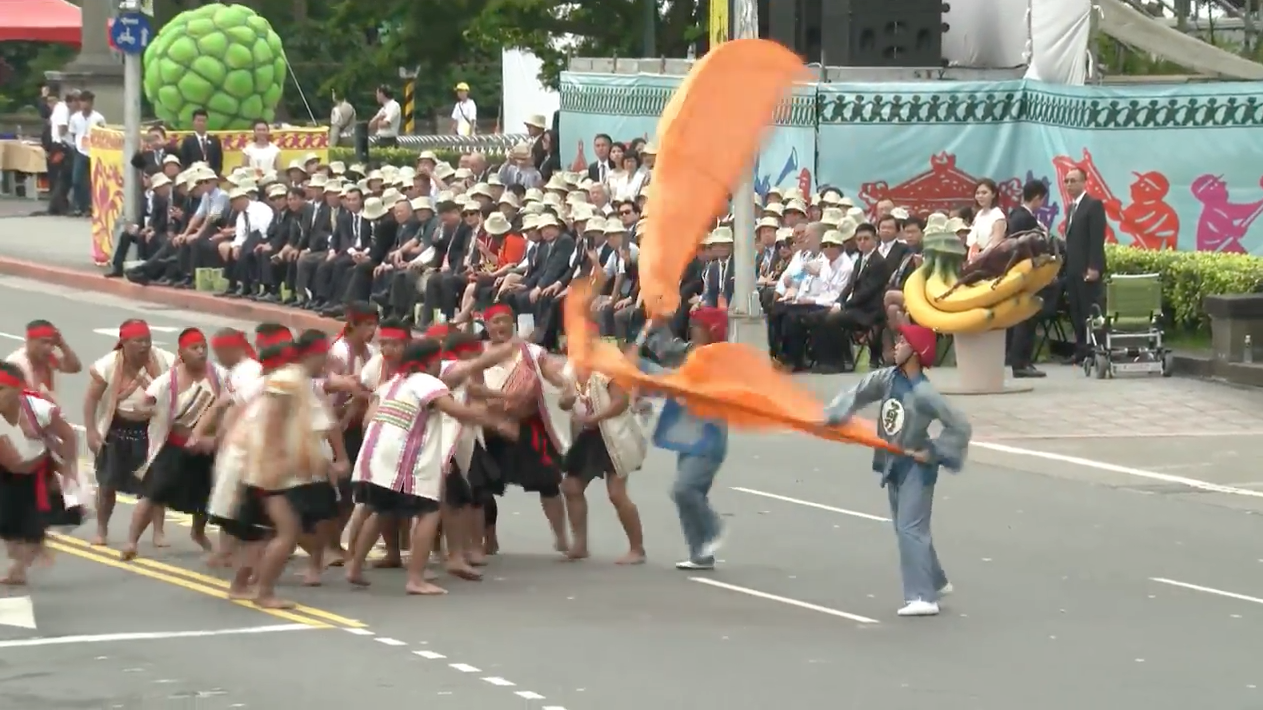 Musical performance of indigenous being driven out by Han settlers during the “Taiwan’s Light” performance which preceded Tsai Ing-Wen’s inauguration. Photo credit: Presidential Residence
Musical performance of indigenous being driven out by Han settlers during the “Taiwan’s Light” performance which preceded Tsai Ing-Wen’s inauguration. Photo credit: Presidential Residence
Namely, there is certainly so small matter of hypocrisy by the Taiwanese government officials from the Ministry of Education or in the Ministry of Foreign Affairs in claiming the moral high ground as though the Taiwanese government were guilt-free and the actions of the relevant high school students were unforgivably ignorant. Sometimes the Taiwanese government has proved no better.
After all, the inauguration of Tsai Ing-Wen, the second non-KMT president in Taiwanese history, was preceded by a bizarre musical performance in which attempts at the ethnic cleansing of Taiwanese indigenous by Han settlers and the massacre of political dissidents during the White Terror were adapted into parts of a light-hearted musical. Regarding the former, Taiwanese indigenous were referred to as a people with “primitive and uncultivated customs” that required civilizing by western missionaries. Regarding the latter, the coming of the KMT in Taiwan was depicted as a positive event and the White Terror was depicted as a momentary lapse of reason in Taiwan without any real explanation, never mind that it was the KMT that caused it.
So, there is no small amount of hypocrisy by Taiwanese government officials preaching from their pulpit regarding the Nazi skit performed by Hsinchu Kuang-Fu High School students, when the Taiwanese government has not always set such a good example. Taiwan’s high school textbooks still continue to teach a version of history which still favors the KMT’s version of history and continue to gloss over its authoritarianism, and one which excludes the history of indigenous, sometimes abrogating indigenous history to Han history. In spite of some changes which the DPP managed to pass under the Chen administration, they still do not fully engage with Taiwan’s own history of authoritarianism, and continued ignorance prevails about indigenous history. Likewise, when this comes from the Tsai administration, there is some hypocrisy, given the stalling of the Tsai administration on efforts at textbook reforms or achieving transitional justice for both indigenous and victims of the White Terror.
 Photo credit: Social Media
Photo credit: Social Media
It is unsurprising, then, that a skit reenacting the 1930 Wushe Incident was also performed on the same day as the Nazi skit, during which students shouted “Fight the Japanese devils, restore our Chinese people!”. While this depiction of the Wushe Incident comes in particular from the KMT version of history in which Taiwanese indigenous are subsumed into the history of Han people as, bizarrely enough, anti-Japanese Chinese patriots, this reenacts the subsumption of indigenous history to Han history as done by both the KMT and DPP, whether for the purposes of subsuming Taiwanese into Chinese history by the former or distancing Taiwan from China by the latter. However, since this does not have the potential to internationally offend, this is a scarcely discussed issue in Taiwan, nor does it prompt any significant responses from government actors. So much for sensitivity to past incidents of ethnic cleansing, then, in spite of what the government otherwise preaches from its pulpit.
Conclusion
THAT TAIWANESE high school students did not understand the cultural valences of Nazi imagery or treated it in a juvenile manner should not be blamed on them alone, when this evidently escapes much of Taiwanese society because of a failure to grasp the cultural context of Nazi iconography, and we see a continued failure to confront the history of authoritarianism and ethnic cleansing in Taiwan itself. As such, there is much hypocrisy in the Taiwanese government’s attempts to step in and try to limit the damage that this incident will do to Taiwan’s diplomatic relations with countries which were the victims of Nazism or with Germany itself. And we do well to point out that this is a broader phenomenon, as observed when Westerners themselves sometimes fail to understand the cultural valences of iconography that suggests Asia’s authoritarian past, and see this as value-free imagery representative of Asian cultures.
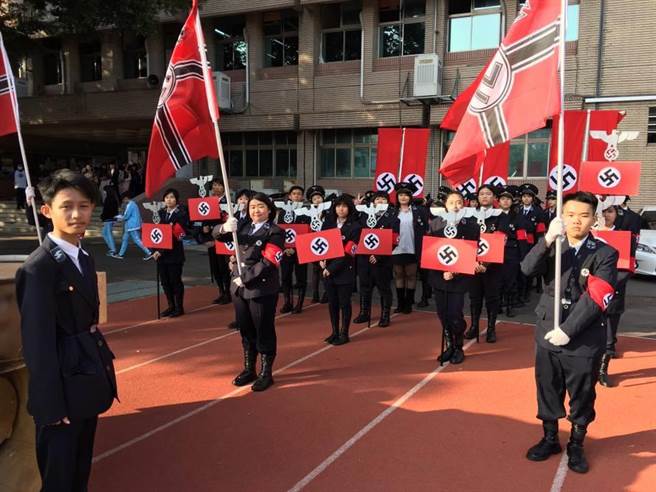 Photo credit: Social Media
Photo credit: Social Media
Will lessons be learned from this incident? One would hope so, but realistically one expects the matter to simply be forgotten over time, with few lessons learnt by all parties. With Taiwanese the government more interested in hushing up the matter than anything else, the high schoolers themselves will probably not truly learn their lesson, but in all probability merely be disciplined into silence. Where the teaching of high school history is concerned, the government itself will continue to be insensitive to the history of indigenous massacres in Taiwan and fail to confront the history of the White Terror. Things will go on as usual.

